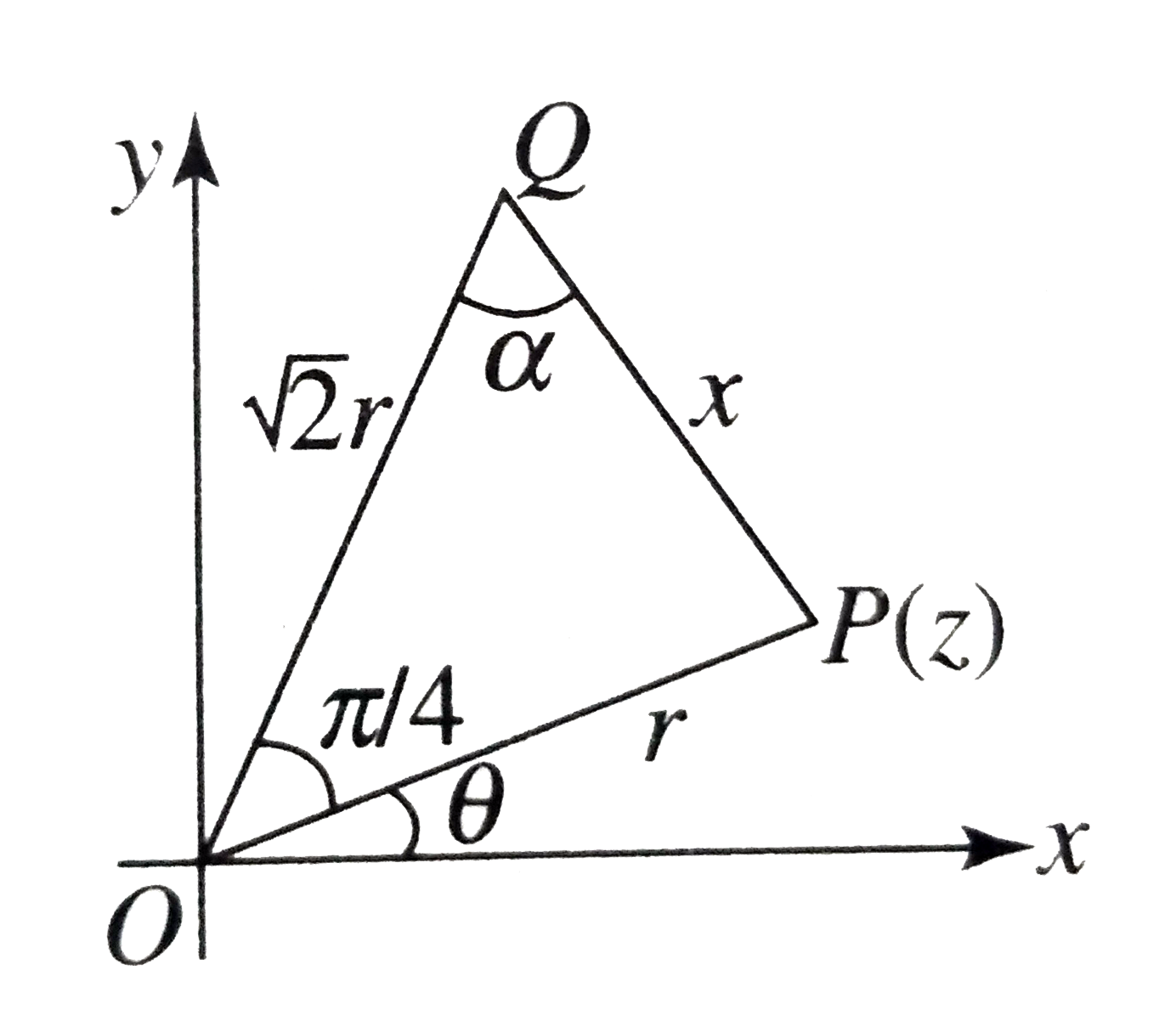Let P denotes a complex number z=r(cosθ+isinθ) on the Argand's plane, and Q denotes a complex number √2|z|2(cos(θ+π4)+isin(θ+π4)). If 'O' is the origin, then ΔOPQ is
A
isosceles but not right angled
B
right angled but not isosceles
C
right isosceles
D
equilateral
Text Solution
The correct Answer is:C
(c) 
ZP=r(cosθ+isinθ)
Z0=√2|z|2(cos(θ+π4)+isin(θ+π4))
=√2r[cos(θ+π4)+isin(θ+π4)]
From the figure,
cosπ4=2r2+r2−x22⋅√2r⋅r=3r2−x22√2r2
∴1=3r2−x22r2
⇒r2=x2⇒x=r⇒ Triangle is right isosceles.
|
Updated on:21/07/2023
Topper's Solved these Questions
- BOOK - CENGAGECHAPTER - COMPLEX NUMBERSEXERCISE - Multiple Correct Answer11videos
COMPLEX NUMBERS
- BOOK - CENGAGECHAPTER - COMPLEX NUMBERSEXERCISE - Matching Column1videos
COMPLEX NUMBERS
- BOOK - CENGAGECHAPTER - CIRCLESEXERCISE - Question Bank16videos
CIRCLES
- BOOK - CENGAGECHAPTER - CONIC SECTIONSEXERCISE - Solved Examples And Exercises87videos
CONIC SECTIONS
Similar Questions
Knowledge Check
- Question 1 - Select One
The modulus of the complex number z=(1−i√3)(cosθ+isinθ)2(1−i)(cosθ−isinθ) is
A1√2B12√2C1√3DNone of these - Question 2 - Select One
Consider the complex number z=(1−isinθ)/(1+icosθ).
If agrument of z is π/4, thenAθ=nπ,n∈I onlyBθ=(2n+1),n∈IonlyCboth θ=nπandθ=(2n+1)π2,n∈IDnone of these - Question 3 - Select One
Consider the complex number z=(1−isinθ)/(1+icosθ).
The value of θ for which z is purely real areAnπ−π4,n∈IBπn+π4,n∈ICnπ,n∈IDNone of these
If π<θ<2π and z=1+cosθ+isinθ , then write the value of |z|.
View SolutionIf π<θ<2πandz=1+cosθ+isinθ, then find the value of |z|.
View SolutionLocate the complex number z such that logcosπ6[|z−2|+54|z−2|−4]<2
View SolutionConsider the complex number z=1−isinθ1+icosθ.
The value of θ for which z is purely real areView SolutionState true or false: If z= cos2θ+isin2θcosθ+isinθ then z is unimodular.
View Solution

